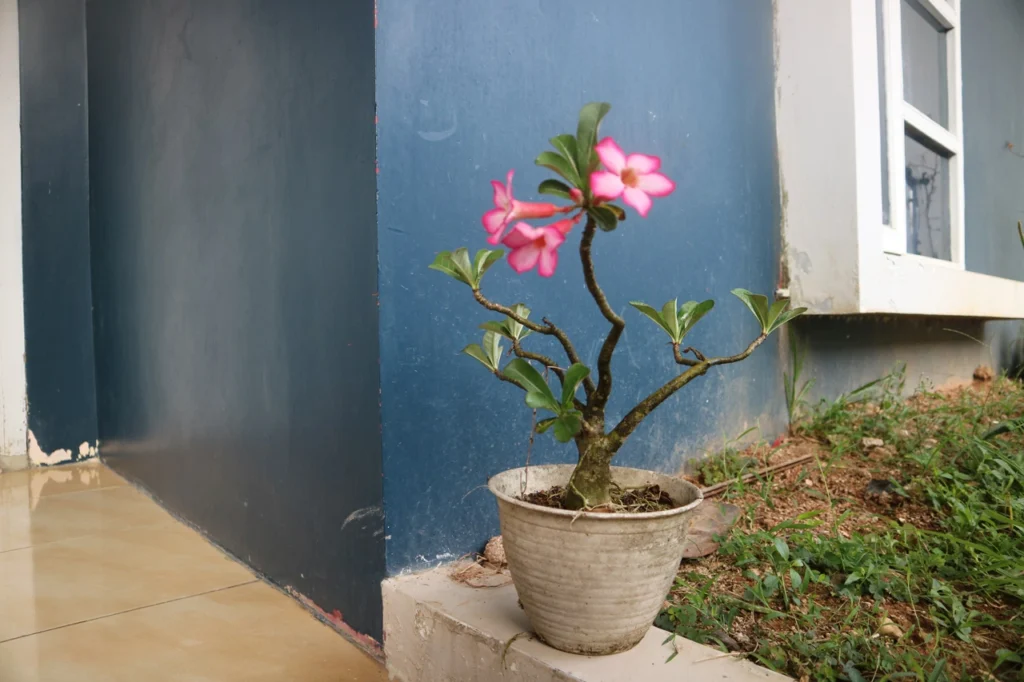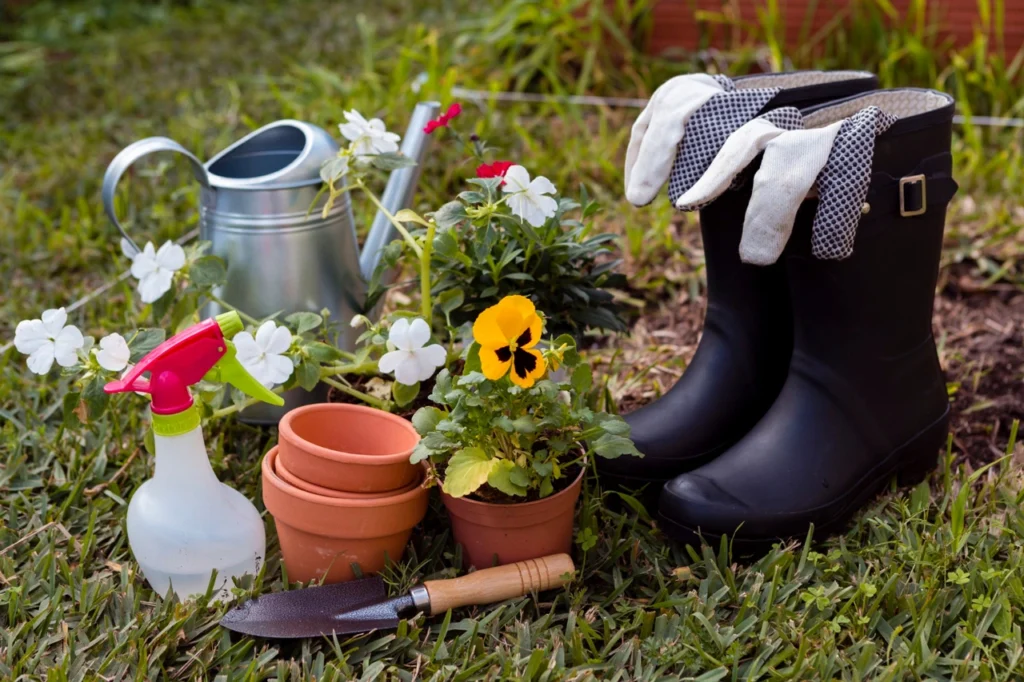Calla lilies are elegant and exotic flowers prized for their striking blooms and lush foliage. These plants are famous for gardens, bouquets, and floral arrangements due to their unique shape and vibrant colors. Proper care ensures that calla lilies thrive and produce stunning blooms.
Brief Overview of Calla Lilies
Calla lilies, also known as Zantedeschia, are native to southern Africa and are part of the Araceae family. They are characterized by their funnel-shaped flowers, which come in various colors, including white, pink, yellow, and purple. Calla lilies are typically grown from bulbs and are favored for their long-lasting cut flowers and ability to add elegance to any garden or indoor space.
Importance of Proper Care for Stunning Blooms
Caring for calla lily bulbs promotes healthy growth and stunning blooms. Individuals can ensure that their calla lilies thrive and produce abundant beautiful flowers by providing the right conditions and maintenance. Proper care also helps prevent diseases and pests, leading to a more vibrant and long-lasting display of blooms.
Selecting and Planting Calla Lily Bulbs
When selecting calla lily bulbs, opt for firm, healthy bulbs with no signs of rot or damage. Plant the bulbs in well-draining soil, ensuring they are 2-4 inches deep and 12 inches apart. Consider planting them in a location that receives partial sunlight and provides protection from strong winds.
Watering and Soil Requirements
Calla lilies thrive in moist but not waterlogged soil. Water the plants regularly, ensuring the soil remains moist during the growing season. However, avoid overwatering as it can lead to rot. Use a well-balanced fertilizer to promote healthy growth and vibrant blooms.
Sunlight and Temperature
Calla lilies prefer partial sun or light shade. Ensure they receive around 4-6 hours of sunlight per day. Protect the plants from extreme heat and provide adequate ventilation to prevent humidity-related issues.
Maintenance and Care
Pruning: Remove spent flowers to encourage continuous blooming and prevent the plant from expending energy on seed production.
Winter Care: In colder climates, lift the bulbs before the first frost, clean them, and store them in a cool, dry place for replanting in the spring.
Pest and Disease Control: Monitor for pests and diseases such as aphids and fungal infections. Use appropriate treatments if needed to maintain plant health.
Understanding Calla Lily Bulbs
Calla lilies are renowned for their elegant and striking blooms, making them a favorite among gardeners and flower enthusiasts. However, to truly appreciate and cultivate these beautiful flowers, it’s essential to understand their bulbs’ characteristics and the various varieties available.
Characteristics of calla lily bulbs
Calla lily bulbs, or rhizomes, possess distinct characteristics that contribute to their growth and development. Here are some key traits to consider:
- Rhizomatous Nature: Calla lily bulbs are rhizomatous, meaning they grow horizontally beneath the soil surface, producing shoots and roots.
- Fleshy Texture: The bulbs are juicy and firm, storing nutrients and water essential for the plant’s vitality.
- Growing Points: Each bulb contains growing points or “eyes” from which new shoots emerge, forming foliage and blooms.
- Hardiness: Calla lily bulbs exhibit varying degrees of hardiness, with some varieties better suited to specific climates and growing conditions.
- Propagation: These bulbs can be propagated through division, where new plants are created from existing bulbs, making them a sustainable choice for gardeners.
Different varieties of calla lilies
Calla lilies come in diverse colors, sizes, and shapes, thanks to the numerous cultivars developed over time. Here are some popular varieties to explore:
- Classic White Calla Lily (Zantedeschia aethiopica): Recognized for its iconic white blooms and lush green foliage, this variety exudes timeless elegance and sophistication. It’s often chosen for weddings and formal occasions.
- Black Calla Lily (Zantedeschia Schwarzwalder): Contrary to its name, this variety features deep purple or nearly black blooms, creating a dramatic and striking visual impact in garden beds and floral arrangements.
- Pink Calla Lily (Zantedeschia Pink Mist): With delicate pink-hued flowers, this variety adds a soft and romantic touch to garden settings, perfect for enhancing borders or mixed flower beds.
- Miniature Calla Lily (Zantedeschia hybrid): Ideal for containers or smaller gardens, miniature Calla lilies boast compact growth habits and charming blooms in various colors, including yellow, orange, and red.
- Variegated Calla Lily (Zantedeschia hybrid): Characterized by foliage adorned with striking variegation patterns, variegated Calla lilies offer visual interest even when not in bloom, making them excellent choices for ornamental planting.
Understanding the characteristics and varieties of calla lily bulbs is fundamental for successfully cultivating and enjoying these exquisite flowers. Whether you prefer the classic elegance of white blooms or the bold hues of black or pink varieties, there’s a calla lily cultivar to suit every taste and garden style.
Your Guide to Selecting the Perfect Calla Lily Bulbs for Your Garden
Calla lilies are exquisite flowering plants that can add elegance and beauty to any garden or landscape. However, the key to success lies in selecting the right bulbs.
Choosing Healthy Bulbs:
Selecting healthy bulbs is paramount to ensuring robust growth and abundant blooms. Here are some tips to help you identify top-quality calla lily bulbs:
- Firmness: Opt for bulbs that are firm to the touch, indicating they are full of moisture and nutrients. Avoid soft or mushy bulbs, as they may be diseased or rotten.
- Size: Look for large, plump bulbs that produce more robust, healthier plants. However, avoid oversized bulbs, as they may have difficulty establishing roots.
- Visible Growth Points: Check for visible growing points or “eyes” on the bulbs, which indicate potential shoots and blooms. Bulbs with multiple eyes are preferable, as they are likely to produce more flowers.
- Cleanliness: Choose bulbs that are clean and free from mold, blemishes, or signs of damage. Healthy bulbs should have smooth, intact surfaces.
- Reputable Suppliers: Purchase bulbs from reputable nurseries or garden centers known for their quality products. Avoid buying bulbs from unknown sources or those offering deeply discounted prices, as they may be of inferior quality.
Considering Climate and Soil Conditions:
Calla lilies thrive in various climates and soil types. However, it’s essential to select bulbs that suit your specific conditions. Here’s how to ensure compatibility:
- Climate Compatibility: Consider the climate in your region and choose calla lily bulbs that are suitable for your local conditions. Some varieties are more cold-hardy, while others prefer warmer temperatures. Consult with local gardening experts or extension services for guidance.
- Soil Requirements: Calla lilies prefer well-draining, fertile soil with a slightly acidic to neutral pH (around 6.0 to 7.0). Before planting, assess your soil’s composition and make any necessary amendments to improve drainage and fertility. Incorporating organic matter such as compost or peat moss can enhance soil structure and nutrient levels.
- Sunlight Exposure: Determine sunlight in your garden or planting area and select Calla lily bulbs accordingly. While calla lilies appreciate full sun to partial shade, they may require protection from intense midday sun in hotter climates. Choose planting locations that receive adequate light without excessive heat or direct afternoon sun.
Selecting healthy calla lily bulbs and considering climate and soil conditions are essential to creating a thriving garden filled with beautiful blooms. By following these guidelines and investing in top-quality bulbs suited to your specific environment, you’ll set the stage for success and enjoy the stunning beauty of calla lilies in your outdoor space.
Planting Calla Lily Bulbs
Planting calla lily bulbs is the first step towards creating a stunning display of vibrant blooms in your garden. To ensure optimal growth and flowering, it’s crucial to understand the timing, depth, spacing, and location requirements for planting.
Timing for Planting:
The timing of planting calla lily bulbs plays a significant role in their establishment and growth. Follow these guidelines for the best results:
- Spring Planting: In most regions, spring is the ideal time to plant calla lily bulbs. Aim to produce them after the last frost date when the soil has warmed up and is workable.
- Fall Planting: In warmer climates with mild winters, you can also plant calla lily bulbs in the fall. This allows them to establish roots before the onset of winter and ensures early spring growth and flowering.
- Avoid Extreme Temperatures: Avoid planting calla lily bulbs during extreme heat or cold periods, as this can stress the bulbs and hinder their growth. Aim for mild, moderate temperatures for successful establishment.
Proper Planting Depth and Spacing:
Proper planting depth and spacing ensure healthy root development and optimal flowering. Follow these guidelines when planting calla lily bulbs:
- Planting Depth: Dig holes for the bulbs approximately 2 to 4 inches deep. Place the bulbs with the growing points facing upwards and cover them with soil, ensuring they are well-anchored but not buried too deeply.
- Spacing: Space calla lily bulbs approximately 12 to 18 inches apart to allow for adequate air circulation and room for growth. Planting them too closely together can lead to overcrowding and resource competition, resulting in stunted growth and reduced flowering.
Ideal Location for Planting:
Choosing the right location for planting calla lily bulbs is crucial for their success and longevity. Consider the following factors when selecting a planting site:
- Sunlight: Calla lilies thrive in partial to full sunlight. Choose a planting location that receives at least 6 to 8 hours of sunlight daily for optimal growth and flowering.
- Soil Drainage: Calla lilies prefer well-draining soil to prevent waterlogging and root rot. Avoid planting them in areas with poor drainage or heavy clay soil. To improve drainage, amend the soil with organic matter such as compost or peat moss.
- Protection from Wind: While calla lilies enjoy a gentle breeze, strong winds can damage their delicate blooms and foliage. Plant them sheltered or provide windbreaks such as fences or shrubs to protect them from excessive wind exposure.
Nurturing Calla Lilies: Mastering Watering and Sunlight for Lush Blooms
Calla lilies, with their elegant blooms and lush foliage, are a sight to behold in any garden. Providing the right amount of water and sunlight is crucial to ensure their health and vitality.
Watering Schedule and Techniques:
Proper watering is essential for the health and growth of calla lilies. Here’s how to create an adequate watering schedule and employ the right techniques:
- Frequency: Water calla lilies regularly during the growing season, typically once or twice a week, depending on weather conditions. Aim to keep the soil consistently moist but not waterlogged.
- Morning Watering: Water calla lilies in the morning to allow foliage to dry before nightfall, reducing the risk of fungal diseases. Avoid watering in the late afternoon or evening.
- Deep Watering: Ensure the soil is thoroughly moistened to encourage profound root growth. Water deeply, allowing the moisture to penetrate the root zone, rather than shallow watering that promotes surface roots.
- Mulching: Apply a layer of organic mulch, such as bark chips or compost, around the base of calla lily plants to help retain soil moisture and suppress weed growth. Mulching also helps regulate soil temperature and reduces water evaporation.
Sunlight Requirements for Calla Lilies:
Calla lilies have specific sunlight requirements for optimal growth and flowering. Here’s what you need to know about meeting their sunlight needs:
- Partial to Full Sun: Calla lilies thrive in partial to full sunlight, receiving at least 6 to 8 hours of direct sunlight per day. Plant them where they can bask in the sun’s warmth and light.
- Morning Sun: Morning sunlight is preferable for calla lilies, as it’s less intense and helps to dry dew from the foliage, reducing the risk of fungal diseases.
- Protection from Hot Afternoon Sun: In regions with intense afternoon heat, provide calla lilies with partial shade during the hottest day to prevent leaf scorch and dehydration. Plant them in locations where they receive filtered sunlight or dappled shade in the afternoon.
- Indoor Cultivation: If growing calla lilies indoors, place them near a bright, south-facing window where they can receive ample sunlight throughout the day. Supplemental grow lights can be used to provide additional light if necessary.
Fertilizing Calla Lily Bulbs: A Guide to Nourishing Blooms
Fertilizing is crucial to caring for calla lily bulbs, as it provides essential nutrients for healthy growth and vibrant blooms. In this comprehensive guide, we’ll explore the importance of choosing the right fertilizer and understanding the frequency and timing of fertilization to ensure your calla lilies thrive.
Choosing the Right Fertilizer:
Selecting the appropriate fertilizer is essential for meeting the specific nutritional needs of calla lily bulbs. Consider the following factors when choosing a fertilizer:
- Balanced Formulation: Opt for a balanced fertilizer with equal or near-equal proportions of nitrogen (N), phosphorus (P), and potassium (K). Look for a fertilizer labeled as “10-10-10” or similar, indicating the percentage of each nutrient.
- Slow-Release vs. Liquid Fertilizer: Choose between slow-release granular fertilizers or liquid fertilizers. Slow-release formulations provide a steady supply of nutrients over time, while liquid fertilizers offer quick absorption and immediate nutrient availability.
- Organic Options: Consider using organic fertilizers derived from natural sources, such as compost, aged manure, or fish emulsion. Organic fertilizers enrich the soil with beneficial microorganisms and promote long-term soil health.
Frequency and Timing of Fertilization:
Understanding when and how often to fertilize calla lily bulbs is essential for optimal growth and flowering. Follow these guidelines for adequate fertilization:
- Initial Fertilization: Apply fertilizer to newly planted calla lily bulbs once they have established roots and begun actively growing. Wait until after the first set of leaves has emerged before applying fertilizer.
- Early Growth Stage: Fertilize calla lilies every 4 to 6 weeks during the growing season, starting early spring and continuing through late summer or early fall. This provides a steady supply of nutrients to support foliage growth and flower production.
- Reduced Fertilization in Winter: Reduce or suspend fertilization during winter when calla lilies are dormant. Resume fertilization in early spring as new growth begins to emerge.
- Application Technique: Follow the manufacturer’s instructions regarding dosage and application method when applying fertilizer. Scatter granular fertilizer evenly around the base of calla lily plants or dilute liquid fertilizer according to label directions and apply directly to the soil.
Pruning and Maintenance Tips for Healthy Calla Lilies
Pruning and maintenance are essential for keeping your calla lilies healthy and thriving. Properly caring for your plants encourages vigorous growth, prolongs flowering, and prevents pest and disease problems.
Removing Spent Blooms:
Deadheading or removing spent blooms is a simple yet effective way to promote continuous flowering and maintain the aesthetic appeal of your calla lilies. Follow these steps for proper deadheading:
- Regular Inspection: Regularly inspect your calla lilies for faded or wilted blooms. These spent flowers should be promptly removed to prevent the plant from expending energy on seed production.
- Pinching Method: To deadhead a spent bloom, grasp the stem below the flower head and pinch it off using your fingers or sharp pruning shears. Make clean cuts to avoid damaging the remaining foliage.
- Encourage Reblooming: By deadheading spent blooms, you encourage the plant to redirect its energy towards producing new flowers, resulting in a more extended flowering period and a tidier appearance.
Trimming Foliage:
Regularly trimming calla lily foliage helps maintain plant health, improve air circulation, and prevent the spread of diseases. Follow these guidelines for trimming foliage:
- Yellowing or Browning Leaves: Remove any yellowing or browning leaves promptly to prevent the spread of fungal diseases such as leaf spots or rot. Trim the affected leaves close to the base of the plant using clean, sharp scissors or pruning shears.
- Overgrown Foliage: Trim back green or leggy foliage to promote a more compact and aesthetically pleasing growth habit. Focus on removing older, lower leaves that no longer contribute to the plant’s vitality.
- Pruning Frequency: Trim calla lily foliage as needed throughout the growing season, especially if you notice signs of disease or overcrowding. Aim to balance removing excess foliage and preserving enough leaves to support the plant’s growth and photosynthesis.
Dealing with Pests and Diseases:
Preventing and addressing pest and disease issues is essential for maintaining the health and vigor of your calla lilies. Here are some common pests and diseases to watch out for:
- Aphids and Spider Mites: Inspect your calla lilies regularly for signs of aphids or spider mites, such as tiny insects or webbing on the undersides of leaves. Use insecticidal soap or neem oil to control infestations.
- Fungal Diseases: Keep an eye out for fungal diseases such as powdery mildew, leaf spot, or root rot, especially during periods of high humidity or excessive moisture. Improve air circulation around plants, avoid overhead watering, and apply fungicides to prevent and treat fungal infections.
- Virus and Bacterial Infections: Watch for symptoms of viral or bacterial infections, such as distorted leaves, yellowing, or stunted growth. Remove and destroy infected plants promptly to prevent the spread of disease to neighboring plants.
Mastering the Art of Overwintering Calla Lily Bulbs
As winter approaches, preparing your calla lily bulbs for the colder months ahead is essential. Overwintering calla lilies involves proper preparation and storage techniques to ensure their survival and vibrant reemergence in the spring.
Preparing Bulbs for winter:
Preparing calla lily bulbs for winter protects them from frost damage and ensures their viability for the next growing season. Follow these steps to prepare your bulbs:
- Cease Watering: As temperatures cool in late autumn, gradually reduce watering frequency and allow the soil around calla lily plants to dry out. This signals the bulbs to enter dormancy in preparation for winter.
- Trimming Foliage: Once foliage begins to yellow and die back naturally, cut it to a few inches above the soil surface. Removing dead foliage helps prevent disease and conserves energy for the bulbs.
- Digging Up Bulbs: In colder climates where temperatures consistently drop below freezing, digging up calla lily bulbs before the ground freezes is advisable. Use a garden fork to gently lift the bulbs from the soil, taking care not to damage them.
Storage Techniques for Colder Climates:
Proper storage protects calla lily bulbs from freezing temperatures and moisture during winter dormancy. Here’s how to store your bulbs effectively in colder climates:
- Cleaning and Drying: After digging up the bulbs, gently shake off excess soil and remove any remaining foliage. Allow the bulbs to air dry in a cool, well-ventilated area for several days to prevent rot.
- Storage Containers: Choose storage containers such as mesh bags, paper bags, or cardboard boxes that provide adequate ventilation and airflow. Avoid plastic bags or airtight containers, which can promote mold and rot.
- Insulation: Line the bottom of the storage container with a layer of dry peat moss, sawdust, or vermiculite to provide insulation and absorb excess moisture. Place the bulbs in a single layer, ensuring they are not touching each other.
- Excellent, Dark Location: Store the bulbs in a perfect, dark location with stable temperatures between 40°F and 50°F (4°C to 10°C). Ideal storage locations include a basement, garage, or root cellar where temperatures remain relatively consistent throughout the winter.
- Regular Inspection: Periodically check the stored bulbs throughout the winter to ensure they remain firm and free from signs of mold or rot. Discard any bulbs that show signs of damage or decay to prevent the spread of disease.
Replanting and Dividing Bulbs
Replanting and dividing calla lily bulbs are essential for maintaining healthy and prolific plants. Over time, calla lilies may become overcrowded or outgrow their planting space, necessitating division to rejuvenate growth and encourage flowering.
When to Replant or Divide Bulbs:
Knowing when to replant or divide calla lily bulbs is crucial for promoting optimal growth and flowering. Consider the following factors to determine the appropriate time for replanting or division:
- Every 2-3 Years: As a general rule, consider replanting or dividing calla lily bulbs every 2 to 3 years. Over time, bulbs multiply and may become overcrowded, reducing blooming and overall vigor.
- After Dormancy: The best time to replant or divide calla lily bulbs is after they have completed their dormancy period and begun actively growing in the spring. This allows the bulbs to establish roots and acclimate to their new planting environment before the onset of summer heat.
- Signs of Overcrowding: Watch for signs that calla lily clumps have become overcrowded, such as reduced flowering, smaller blooms, or crowded foliage. These indicators suggest that division is necessary to rejuvenate the plants and promote healthy growth.
Proper Techniques for Division:
Dividing calla lily bulbs requires care and precision to ensure successful transplantation and continued growth. Follow these steps for proper division:
- Digging Up Bulbs: Carefully dig up the calla lily clump using a garden fork or shovel without damaging the bulbs or roots. Gently shake off excess soil to expose the bulbs.
- Separating Bulbs: Inspect the calla lily clump and identify individual bulbs or rhizomes suitable for division. Use clean, sharp gardening tools such as a knife or pruners to carefully separate the bulbs, ensuring each division has healthy roots and growing points.
- Trimming and Inspection: Trim any damaged or dead roots from the divided bulbs and inspect them for signs of disease or pests. Discard any bulbs that appear unhealthy or compromised.
- Replanting: Prepare the planting area by amending the soil with compost or organic matter to improve fertility and drainage. Plant the divided bulbs at the appropriate depth, typically 2 to 4 inches deep, and space them according to their mature size.
- Watering and Mulching: After replanting, thoroughly water the newly divided bulbs to settle the soil and promote root establishment. Apply a layer of mulch around the base of the plants to conserve moisture and suppress weed growth.
Troubleshooting Common Issues with Calla Lilies: Solutions for a Healthy Garden
While calla lilies are relatively low-maintenance plants, they can encounter various issues that may affect their growth and flowering. Understanding how to troubleshoot and address common problems is essential for maintaining healthy and vibrant calla lilies in your garden.
Yellowing Leaves:
Yellowing leaves is a common issue with calla lilies and can be caused by several factors, including overwatering, underwatering, nutrient deficiencies, or environmental stress. Here’s how to address yellowing leaves:
- Assess Watering: Check the soil moisture levels and adjust your watering practices accordingly. Overwatering can lead to root rot and yellowing leaves, while underwatering can cause drought stress.
- Improve Drainage: Ensure the planting area has proper drainage to prevent waterlogged soil, which can suffocate the roots and lead to yellowing leaves. Incorporate organic matter into the soil to improve its structure and drainage.
- Fertilize Appropriately: Yellowing leaves may indicate nutrient deficiencies, particularly nitrogen or iron. Apply a balanced fertilizer for flowering plants to provide nutrients and promote healthy foliage growth.
- Check for Pests and Diseases: Inspect the plants for signs of pest infestations or diseases, as these can also cause yellowing leaves. Treat any issues promptly to prevent further damage to the plants.
Lack of Blooms:
A lack of blooms in calla lilies can be disappointing but is often attributed to improper care, inadequate sunlight, or overcrowding. Here are some solutions to encourage blooming:
- Provide Adequate Sunlight: Ensure calla lilies receive at least 6 to 8 hours of direct sunlight daily to promote flowering. If necessary, transplant them to a sunnier location with better light exposure.
- Avoid Overcrowding: Overcrowded calla lily clumps may compete for resources and produce fewer blooms. Divide overcrowded clumps every 2 to 3 years to rejuvenate growth and encourage flowering.
- Proper Watering and Fertilization: Maintain consistent watering and fertilization practices to provide flowering nutrients. Avoid overfertilizing, as excessive nitrogen can lead to lush foliage at the expense of blooms.
Pests and Diseases:
Calla lilies are susceptible to various pests and diseases, including aphids, spider mites, fungal infections, and bacterial diseases. Here’s how to identify and address common pest and disease issues:
- Pest Control: Monitor plants regularly for signs of pest infestations, such as distorted leaves, webbing, or visible insects. Use insecticidal soap, neem, or horticultural oils to control pests effectively.
- Disease Management: Watch for symptoms of fungal diseases, such as powdery mildew or leaf spot, and bacterial infections, such as soft rot. Improve air circulation around plants, avoid overhead watering, and apply fungicides or bactericides to prevent and treat diseases.
Conclusion
Gardeners who care for calla lily bulbs get beautiful flowers and foliage. Understanding calla lily bulb traits, picking healthy specimens, and providing ideal growing conditions can produce a lovely landscape with these magnificent flowers.
Calla lilies need bulb selection, watering, sunlight, and other elements of care. Proper trimming and care prevent pests and diseases, keeping plants healthy and beautiful all season.
Learning when to replace, divide, and overwinter calla lily bulbs improves longevity and garden success. These instructions and resolving common issues like yellowing leaves, lack of blossoms, and pest infestations can help you develop a lovely calla lily garden year after year.
Calla lilies’ timeless beauty and elegance can be enjoyed in your outdoor space with effort, attention to detail, and patience, creating a natural paradise to share. Roll up your sleeves, dig, and watch your calla lilies bloom and decorate your garden and life.














